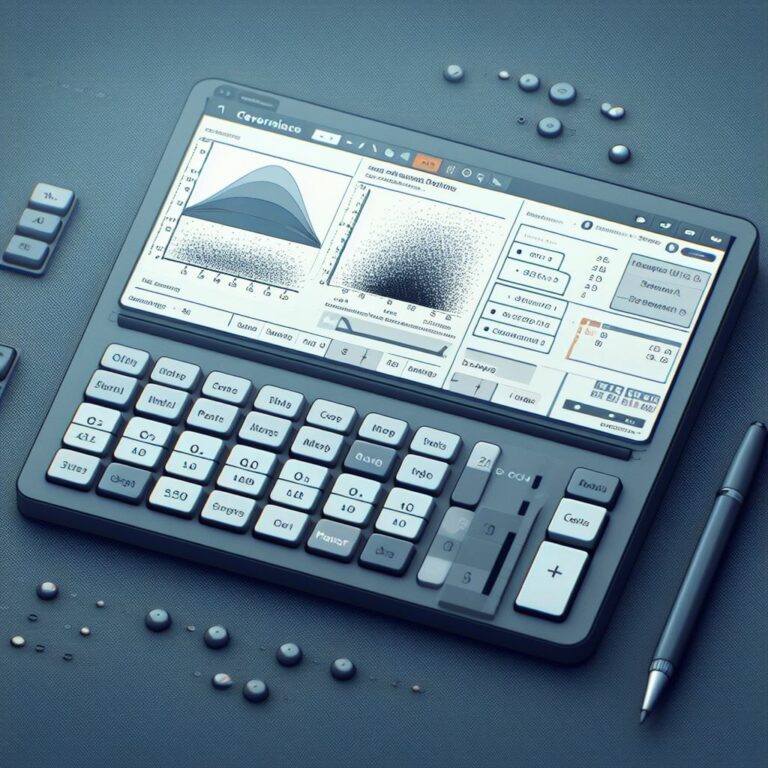The Role of Sigma in Statistics
Sigma is a Greek letter used in Statistics to represent standard deviation, which shows how much data varies from its mean. Sigma plays a big role in various areas related to Statistics, such as hypothesis testing, confidence intervals, and quality control.
Hypothesis testing uses standard deviation of a sample to learn if an observed difference between two groups was due to chance or was statistically significant. This helps researchers draw accurate conclusions from their data.
Confidence intervals use sigma to determine a range of values in which a population parameter lies. The width of the interval is based on the confidence level and sample size, which are both related to sigma.
In quality control, sigma measures process capability, showing how well a process meets its specs. A higher value of sigma means less defects, while a lower value suggests there are more inconsistencies.
For instance, a manufacturing company that makes electronics can use sigma to monitor and improve product quality. By tracking sigma over time, they can identify areas for improvement and take corrective actions.
What is Sigma?
Sigma, symbolized by σ, is a stat term to measure variability or spread of data around the mean. It is important in fields such as finance, engineering, and social sciences. With sigma, statisticians can determine certainty or uncertainty in a dataset.
Sigma goes beyond simple arithmetic. It lets us quantify how close our data points are to the expected average. Through standard deviation, which relates to sigma, we learn about the data’s dispersion from the mean.
Sigma also helps with hypothesis testing and decision-making. Confidence intervals based on mathematical models involving sigma let analysts assess if observed differences are true or just random.
To make sure statistical analysis is accurate, follow these tips:
- Collecting a representative sample size increases reliability of sigma values.
- In cases with outliers, use methods like robust stats to reduce their effects.
- Skewed datasets may need transformations for more accurate sigma estimations.
By using these tips and harnessing the power of sigma, researchers can confidently get meaningful insights from their data. This lets them make informed decisions and progress their fields without unnecessary doubt.
The significance of Sigma in Statistics
Sigma: A crucial part of statistical analysis! It helps measure variability and standard deviation, providing insights into data distribution. It also indicates statistical reliability.
This concept was first introduced by German mathematician Carl Friedrich Gauss in the early 19th century.
Since then, Sigma has been an essential tool for statisticians. It can quantify uncertainty and variability in experiments. Thus, it has significantly contributed to advancing statistical research and data-driven decision making.
Applications of Sigma in Statistical Analysis
Statistical analysis has a fundamental understanding of Sigma. It’s denoted by σ and it’s used to measure variability or dispersion around the mean. It helps detect and evaluate data patterns, aiding researchers and decision-makers in making accurate interpretations.
Sigma has many applications in statistical analysis. Here are some examples:
- Six Sigma Methodology – Identifying and reducing defects or variations in processes for quality management.
- Standard Deviation Analysis – Measuring the spread of data points around the mean.
- Statistical Process Control – Monitoring and keeping stable and consistent process performance using data-driven frameworks.
- Z-Scores – Seeing an observation’s relative position in a distribution by quantifying deviations from the mean.
Sigma has unique details that extend its practicality in statistical analysis further. It enables precision and accuracy. It helps predict future outcomes based on historical trends, and it shows potential risks of decisions.
Professionals should use Sigma in their decision-making processes. It can drive business growth, optimize operational efficiency, and give an advantage over competitors.
Don’t let fear hold you back from realizing your potential. Seize new avenues for success by using statistical analysis with Sigma!
Limitations and Criticisms of Sigma in Statistics
Sigma, a vital measure in statistics, has its own restrictions and criticisms. It is important to be aware of these faults when using sigma in statistical analysis for precise outcomes.
Here is a table with some of the key problems and criticisms related to sigma in statistics:
| Limitations | Criticisms |
|---|---|
| Normal distribution assumed | Outliers not considered |
| Sample size affects it | Fails to capture all variation |
| Ignores underlying trends | Past data relied on |
Apart from the data covered in the table, it is essential to think about other elements of sigma’s restrictions. For instance, it assumes a normal distribution which is not always the case in real-world scenarios. Also, sigma can be affected by sample size, which could lead to incorrect results if the sample size is small.
To show the impact of these limitations, here is a real-life story. A manufacturing company used sigma calculations to monitor defects in their production process. But they encountered an issue when an unexpected outlier happened due to an unusual occurrence that was outside the normal distribution curve. This event showed the importance of understanding the boundaries of sigma and using different statistical methods for exhaustive data analysis.
Conclusion
The importance of sigma in statistics is immense. It assists in finding the variability and accuracy of data. Calculating the standard deviation, sigma gives us knowledge about the spread of data around the mean.
Moreover, sigma is used extensively in quality control to measure the constancy and dependability of production processes. Organizations can make sure that their products follow desired quality levels by establishing appropriate sigma rules.
Also, sigma is very important in hypothesis testing. The probability distribution connected with sigma helps statisticians decide if an observed result is scientifically essential or just due to luck.
Interestingly, the idea of using sigma as a measure of difference comes from Carl Friedrich Gauss in the early 19th century. He was a celebrated maths expert who made immense contributions to statistics and probability theory. Gauss brought in the concept of “normal distribution” and created methods for computing parameters such as mean and variance.
Altogether, recognizing the part of sigma is necessary for anyone dealing with statistical data. Its capacity to measure variability and give insights into data accuracy makes it an invaluable tool for researchers, analysts, and decision-makers. So, the next occasion you examine data or execute quality control checks, recollect the worth of sigma!
Frequently Asked Questions
Q: What is the role of sigma in statistics?
A: Sigma (σ) is a symbol used in statistics to represent the standard deviation of a set of data. It measures how spread out or dispersed the data is from the mean value.
Q: How is sigma calculated?
A: Sigma can be calculated by finding the square root of the variance. The variance is determined by calculating the average of the squared differences between each data point and the mean.
Q: Why is sigma important in statistics?
A: Sigma is important because it provides a measure of variability within a dataset. It allows researchers and analysts to understand how close or spread out the data points are from the average, providing valuable insights into the overall distribution of the data.
Q: What does a high sigma value indicate?
A: A high sigma value indicates that the data points are more spread out or have greater variability from the mean. This suggests that the dataset has a wider range of values and may be more unpredictable or less precise.
Q: What does a low sigma value indicate?
A: A low sigma value indicates that the data points are closer together and have less variability from the mean. This suggests that the dataset has a narrower range of values and may be more consistent or precise.
Q: How is sigma used in hypothesis testing?
A: In hypothesis testing, sigma is used to calculate the standard error, which measures the precision of an estimated statistic. It helps determine whether the observed difference between groups or variables is statistically significant or simply due to chance.
- What Polls Reveal About Sleeping Together Early and Long-Term Relationship Success - July 7, 2025
- How to Design a Hard Harry Potter Trivia Challenge - October 4, 2023
- How to Design a Dear Peachie Makeup Preference Poll - October 4, 2023













